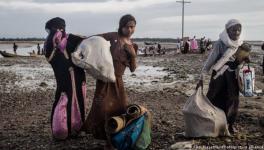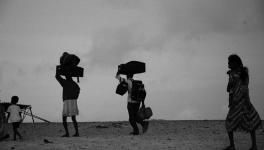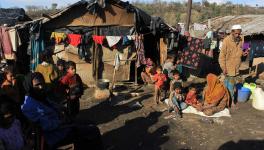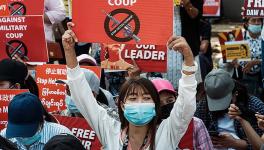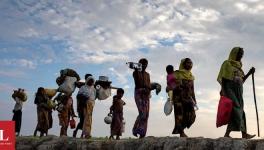Myanmar: One Grave for 10 Rohingya Men, Chilling Report Exposes ‘Genocidal’ Killings
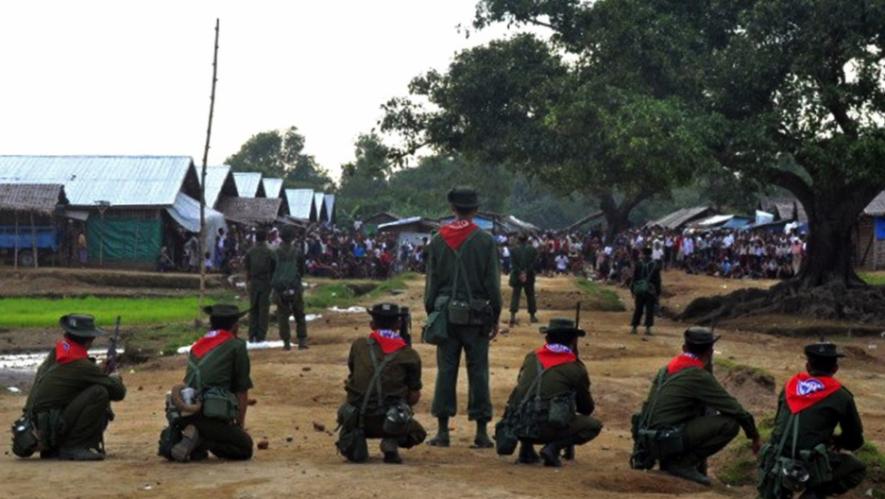
Normal 0 false false false EN-US JA X-NONE /* Style Definitions */ table.MsoNormalTable {mso-style-name:"Table Normal"; mso-tstyle-rowband-size:0; mso-tstyle-colband-size:0; mso-style-noshow:yes; mso-style-priority:99; mso-style-parent:""; mso-padding-alt:0cm 5.4pt 0cm 5.4pt; mso-para-margin:0cm; mso-para-margin-bottom:.0001pt; mso-pagination:widow-orphan; font-size:10.0pt; font-family:"Times New Roman"; border:none;} In a report that provides further evidence of acts of genocide against Rohingya population, Reuters in a special investigation exposed the complicity of Myanmar military in the mass crime. The report, Massacre in Myanmar, with the use of testimonies from perpetrators and victims as well as photographs, reconstructed the massacre of 10 men in the village of Inn Din in the Rakhine region.
Speaking about the report, the Reuters said, "until now, accounts of the violence against the Rohingya in Rakhine state have been provided only by its victims. The Reuters reconstruction draws for the first time on interviews with Buddhist villagers who confessed to torching Rohingya homes, burying bodies and killing Muslims.”
The report further speaks about the raid and looting carried out by soldiers belonging to the army’s 33rd Light Infantry Division, supported by the paramilitary 8th Security Police Battalion as part of the ‘clearance operation’ in Rohingya villages.
Reconstructing the events that happened in September last year, the report found evidence that 10 Rohingya men were arrested and questioned by the soldiers on September 01. They were interrogated about the disappearance of a local Buddhist farmer named Maung Ni, as per the eyewitness.
Next day, on September 02, the 10 men were given new clothes and were taken to scrubland north of the village. With their hands tied behind them, they waited for their death.
According to testimonies, first a few of them were hacked to death by villagers who were part of the local militias. Others were shot dead by the soldiers.
“One grave for 10 people,” said Soe Chay, 55 who helped dig the grave.
“The soldiers shot each man two or three times when they were being buried, some were still making noises. Others were already dead,” said Chay.
According to the reports, among the 10 men killed were two students, Abulu, 17, and Rashid Ahmed, 18, and an Islamic preacher Abdul Malik, 30. Others were Dil Mohammed, 35, Nur Mohammed, 29, Shoket Ullah, 35, Habizu, 40, and Shaker Ahmed, 45, Abul Hashim, 25, Abdul Majid, 45.
Two Reuters reporters, Wa Lone and Kyaw Soe Oo, were arrested in December last year by Myanmar’s authorities for allegedly obtaining confidential documents in preparation of the report. Lone had earlier visited the massacre site and managed to photograph the graves and skeletons.
“The reporters discovered a newly cut trail leading to soft, recently disturbed earth littered with bones. Some of the bones were entangled with scraps of clothing and string that appeared to match the cord that is seen binding the captives’ wrists in the photographs.” The report notes, “The immediate area was marked by the smell of death.”
The evidence that both the journalists had unearthed during the investigation forced Myanmar authorities to accept that its soldiers had engaged in killings of Rohingya men.
Last month, in a statement on Facebook, Myanmar's military commander Min Aung Hlaing said the “Bengali terrorists" were part of 200 militants that attacked Myanmar soldiers with sticks and swords. The soldiers had arrested 10 men in connection to the attack and had killed them because they could not transfer them to police as the forces were under heavy Rohingya militant attack.
"The army will take charge of those who are responsible for the killings and who broke the rules of engagement," the statement continued. "This incident happened because ethnic Buddhist villagers were threatened and provoked by the terrorists.
But the Reuters investigation into the massacre found gaps in the story put forward by the army. The evidence suggested that 10 men were picked up when some of the Rohingya villagers had come back near their burned villages in search of food.
According to the testimonies, the 10 men were executed in a planned way.
The report records that the Buddhist elder, who provided the evidence of the massacre, explaining his reason to talk to Reuters said, “I want to be transparent on this case. I don’t want it to happen like that in future.”
In a recent report, medical humanitarian organization Medecins Sans Frontieres (MSF) had noted that at least 6,700 Rohingya, including at least 730 children under the age of five, were killed in the month of August after the violence broke out.
According to various estimates, more than half a million Rohingyas have fled to Bangladesh fearing persecution in Myanmar, where they are considered non-citizens.
In response to Reuters’s investigation, government spokesman Zaw Htay said that the government is not denying certain cases of human rights violations, but the different allegations need to be verified.
“It is very difficult in the current situation.” Htay further added that “the international community needs to understand who did the first terrorist attacks.”
Get the latest reports & analysis with people's perspective on Protests, movements & deep analytical videos, discussions of the current affairs in your Telegram app. Subscribe to NewsClick's Telegram channel & get Real-Time updates on stories, as they get published on our website.










